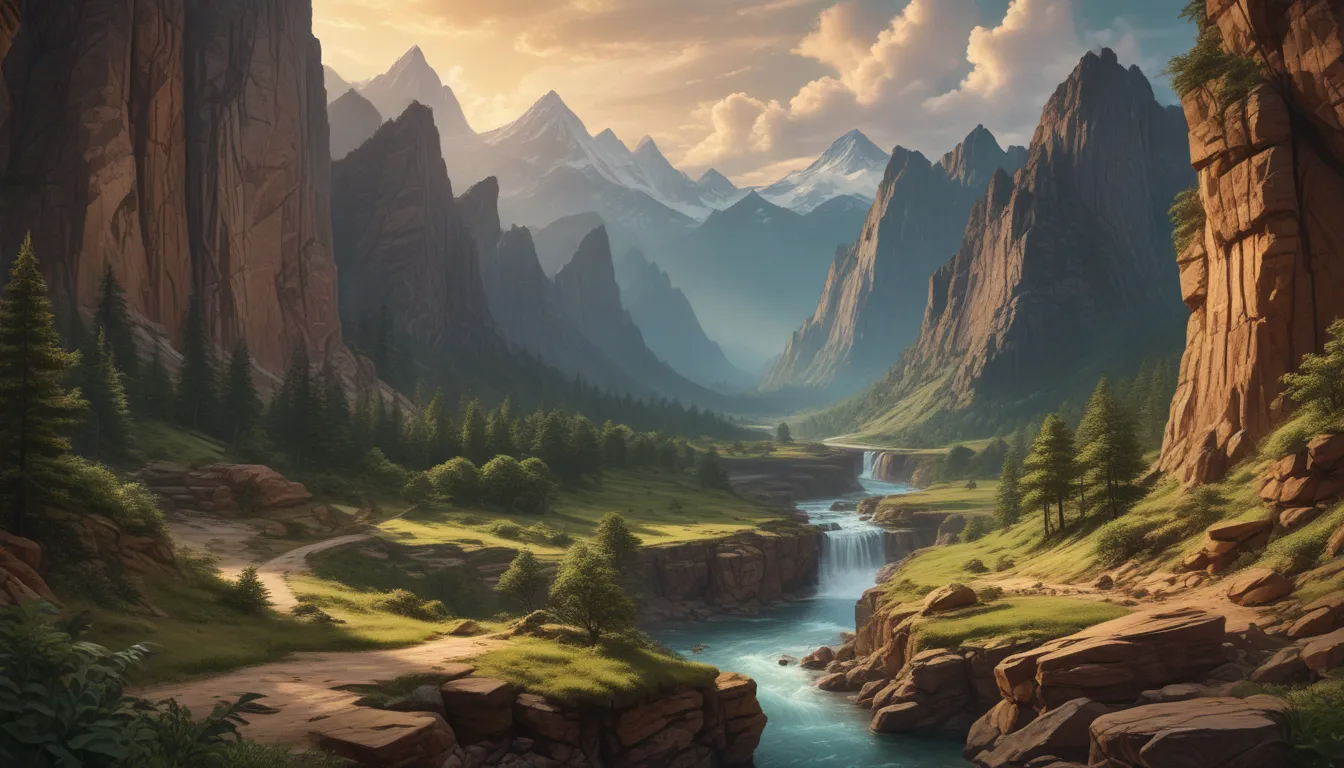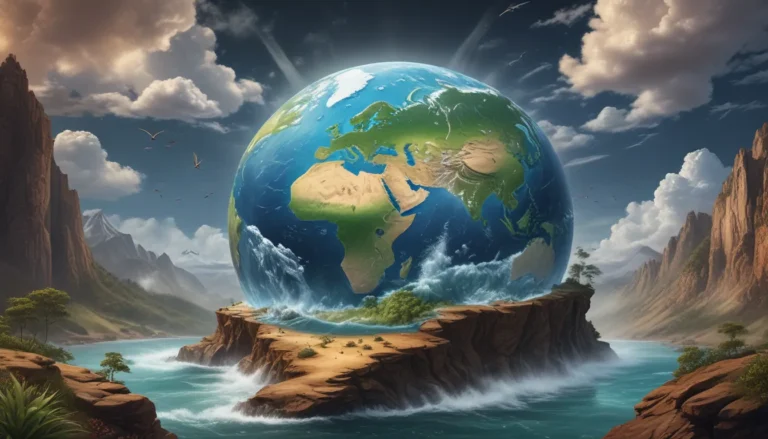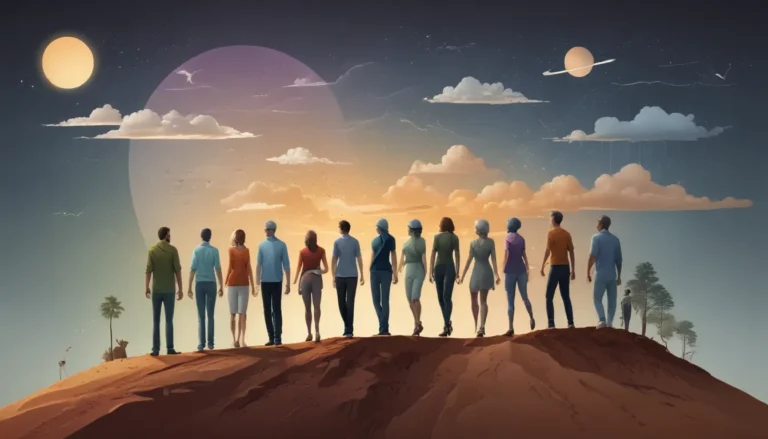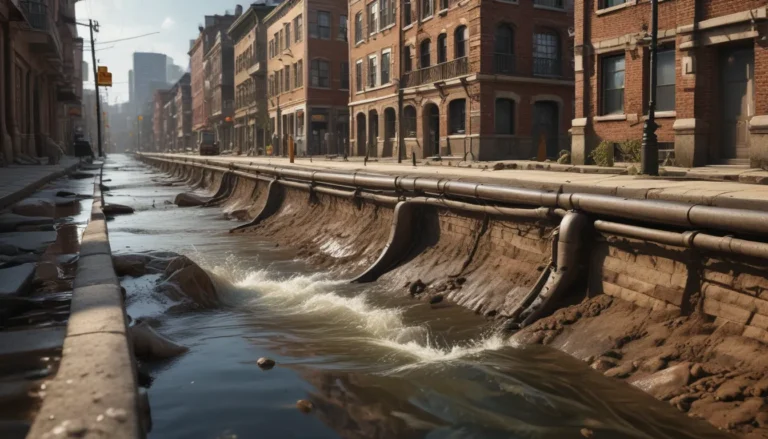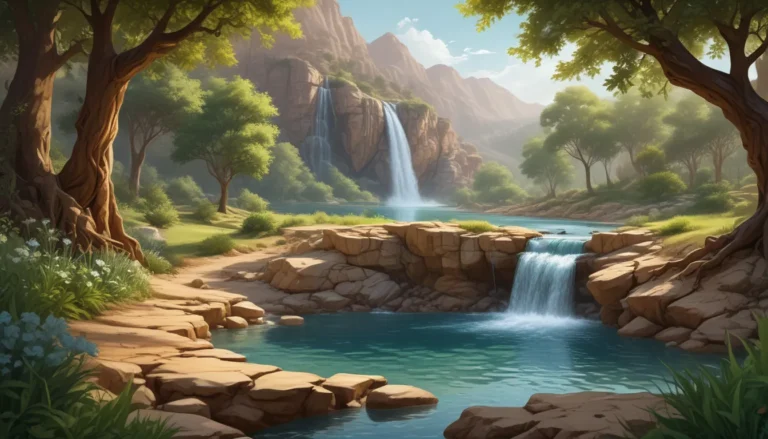A Note About Images: The images used in our articles are for illustration purposes only and may not exactly match the content. They are meant to engage readers, but the text should be relied upon for accurate information.
If you’ve ever marveled at the grandeur of towering mountains or pondered the forces behind the Earth’s mesmerizing landscapes, you’ve likely encountered the captivating phenomenon known as orogeny. This geological process, shaped by tectonic plate movements, has intricately molded the planet’s crust for millions of years, giving rise to awe-inspiring mountain ranges and diverse habitats. In this article, we will embark on a journey through the realm of orogeny, unveiling 19 extraordinary facts that will deepen your understanding of this remarkable geological force.
Unveiling the Forces Behind Mountain Formation
Orogeny, at its core, is the process responsible for the creation of mountains. When tectonic plates collide, the Earth’s crust undergoes folding and buckling, gradually sculpting majestic mountain ranges over vast stretches of time. This intricate dance of geological forces shapes our planet’s surface, creating landscapes that captivate the imagination.
The Himalayas: Majestic Peaks Among the Clouds
The Himalayas stand as a testament to the ongoing collision between the Indian and Eurasian plates, boasting the title of the highest mountain range on Earth. Within this breathtaking expanse lies Mount Everest, the pinnacle of Earth’s majestic peaks, soaring to unparalleled heights and igniting dreams of conquering the skies.
The Appalachian Mountains: An Ancient Legacy
Spanning the eastern United States, the Appalachian Mountains stand as one of the oldest mountain ranges globally, with roots dating back to the Paleozoic Era, a testament to the enduring power of orogeny over millions of years. These ancient peaks hold stories of time immemorial, etched into their rugged landscapes.
Unveiling the Hidden Treasures of Orogeny
Amidst the tumultuous mountain-building process of orogeny lie hidden treasures waiting to be discovered. Intense pressure and heat within the Earth’s depths can give birth to valuable mineral deposits, including precious metals like gold, silver, and copper, enriching the very fabric of the Earth itself.
The Andes: Nature’s Endless Horizon
Stretching over 7,000 kilometers along the western coast of South America, the Andes Mountains reign as the longest mountain range on Earth, a testament to the enduring power of orogeny in shaping vast and awe-inspiring landscapes.
Unveiling the Spectacular Fold Mountains
As tectonic plates converge, the Earth’s crust undergoes intricate folding and faulting, resulting in the creation of spectacular fold mountains with distinctive layered appearances. These geological marvels showcase the artistry of orogeny in crafting landscapes of unparalleled beauty.
Patience in Progress: The Slow Dance of Orogeny
Mountain-building processes unfold at a leisurely pace, often spanning millions of years to carve out towering peaks and expansive mountain ranges. Orogeny’s patient handiwork demonstrates the enduring nature of geological forces in sculpting Earth’s landscapes.
The Central Alps: A Symphony of Collision
The collision between the European and African plates gave birth to the iconic beauty of the Central Alps, a majestic range revered by millions of visitors each year for its scenic splendor and rugged charm.
Unveiling the Depths of the Abyss: Ocean Trenches
In the wake of tectonic collisions, the Earth’s crust can plunge to abyssal depths, birthing oceanic trenches like the Mariana Trench, the deepest point in the world’s oceans. These geological wonders remind us of the profound forces at play beneath the ocean’s surface.
The Rocky Mountains: An Emblem of the West
Stretching across multiple U.S. states and Canadian provinces, the Rocky Mountains stand as a prominent symbol of the western landscape, their majestic peaks a testament to the enduring legacy of orogeny in shaping the world around us.
A Rising Land: Orogeny’s Uplifting Power
Through the collision of tectonic plates, regions once submerged can be uplifted to form new landmasses, reshaping the Earth’s surface and giving rise to diverse habitats.
The Alps: Europe’s Alpine Majesty
The collision between the African and Eurasian plates birthed the stunning beauty of the Alps, Europe’s iconic mountain range cherished for its picturesque vistas and alpine allure.
Unveiling Earth’s Restless Nature: Earthquakes and Volcanic Activity
The intense pressures and interactions between tectonic plates during orogeny can trigger seismic upheavals and volcanic eruptions, showcasing the dynamic and restive nature of our planet’s crust.
The Great Dividing Range: Australia’s Geological Legacy
The Great Dividing Range, tracing Australia’s eastern coastline, stands as a testament to orogenic activity that unfolded over millions of years, shaping the continent’s rugged terrain and defining its geological heritage.
An Ongoing Legacy: Orogeny in Motion
The legacy of orogeny extends beyond the past, shaping Earth’s surface in the present day through gradual and continuous processes that leave their indelible mark on the planet’s ever-evolving landscape.
The Ural Mountains: A Boundary Betwixt Continents
Spanning from Russia to Kazakhstan, the Ural Mountains serve as a natural boundary between Europe and Asia, a geological demarcation that echoes the enduring forces of orogeny.
The Coast Mountains: North America’s Pacific Jewel
The Coast Mountains, adorning North America’s western edge, bear witness to the collision of the North American and Pacific plates, shaping a majestic range that captivates the imagination and showcases the power of geological forces at work.
Nurturing Biodiversity: Diverse Habitats Formed by Orogeny
The creation of mountains through orogeny yields diverse habitats that nurture a myriad of plant and animal species, fostering evolution and biodiversity in regions shaped by towering peaks and expansive ranges.
Plate Tectonics: The Driving Force Behind Orogeny
Plate tectonics, the monumental movement and interaction of Earth’s plates, play a pivotal role in the process of orogeny, shaping mountains and landscapes through their titanic collisions and transformative forces.
In delving into these 19 extraordinary facts about orogeny, we unveil a glimpse of the profound geological forces that have shaped our planet over eons. From the towering majesty of the Himalayas to the rugged allure of the Andes, orogeny leaves an indelible mark on Earth’s surface, reminding us of the enduring power of geological processes in crafting our world.
Conclusion: Embracing the Legacy of Orogeny
In conclusion, orogeny stands as a captivating testament to Earth’s dynamic geological history, shaping landscapes and shaping the world around us for millions of years. Through our exploration of these 19 extraordinary facts, we gain insight into the mechanisms, effects, and significance of orogeny in Earth’s geological tapestry, deepening our appreciation for the intricate forces at play in our planet’s evolution.
As we gaze upon the peaks and valleys sculpted by orogeny, let us remember the extraordinary story unfolding beneath our feet, a tale of geological forces shaping our world with unwavering patience and enduring beauty.
FAQs: Unveiling Further Insights
- What is orogeny?
-
Orogeny refers to the process of mountain building through tectonic plate movements and geological forces.
-
How long does orogeny take?
-
The duration of orogeny varies based on geological conditions and forces, often spanning millions of years for a mountain range to form.
-
What are the main forces involved in orogeny?
-
Compression, from tectonic plate collisions, and uplift, raising rock layers, are the primary forces central to orogeny.
-
Can orogeny cause earthquakes?
-
Yes, the intense pressure and movement of tectonic plates in orogeny can trigger seismic events like earthquakes.
-
Are all mountain ranges formed by orogeny?
-
Yes, nearly all major mountain ranges worldwide have originated from the intricate processes of orogeny.
-
Can orogeny influence climate?
-
Yes, the creation of mountain ranges in orogeny can impact climate patterns by altering air masses and weather systems.
-
Are the effects of orogeny reversible?
-
While some effects of orogeny can be partially reversed through erosion, the fundamental structures and shapes of mountains typically endure.
-
Are there notable examples of orogeny?
-
Yes, iconic mountain ranges like the Himalayas, the Andes, and the Rockies showcase the powerful legacy of orogeny on Earth’s landscapes.
-
Can orogeny affect plant and animal distribution?
-
The formation of mountain ranges through orogeny creates diverse habitats that influence the distribution and evolution of plant and animal species.
-
How does orogeny illuminate Earth’s history?
- By studying rock layers and fossils within mountain ranges shaped by orogeny, scientists gain valuable insights into Earth’s geological past and evolutionary journey.
As we continue to explore the intricate tapestry of orogeny, we invite you to join us in unraveling the mysteries of Earth’s geological forces, each peak and valley a testament to the enduring legacy of mountain-building processes that have sculpted our planet with unparalleled beauty. Trust in our commitment to delivering insightful and engaging content, crafted with care and precision to illuminate the wonders of our world.
Was this page helpful?
Each fact shared on our platform is a product of real users like you, contributing their diverse insights and knowledge to create a wealth of captivating information. Our dedicated editors rigorously review each submission, ensuring the highest standards of accuracy and reliability in the facts we present. Explore the wonders of our world with confidence, knowing that our commitment to authenticity and quality guides every step of your journey with us.
